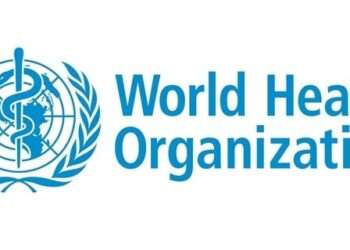The number of people affected by hunger globally rose to as many as 828 million in 2021, an increase of about 46 million since 2020 and 150 million since the outbreak of the COVID-19 pandemic, according to a United Nations report.
The report provided fresh evidence that the world is moving further away from its goal of ending hunger, food insecurity and malnutrition in all its forms by 2030.
“These are depressing figures for humanity. We continue to move away from our goal of ending hunger by 2030. The ripple effects of the global food crisis will most likely worsen the outcome again next year. We need a more intense approach to end hunger and IFAD stands ready to do its part by scaling up its operations and impact. We look forward to having everyone’s support”.
IFAD President Gilbert F. Houngbo
WHO Director-General, Tedros Adhanom Ghebreyesus, said every year, 11 million people die due to unhealthy diets. He noted that rising food prices mean this will only get worse.
“WHO supports countries’ efforts to improve food systems through taxing unhealthy foods and subsidizing healthy options, protecting children from harmful marketing, and ensuring clear nutrition labels. We must work together to achieve the 2030 global nutrition targets, to fight hunger and malnutrition, and to ensure that food is a source of health for all”.
Tedros Adhanom Ghebreyesus
The 2022 edition of The State of Food Security and Nutrition in the World (SOFI) report presented updates on the food security and nutrition situation around the world, including the latest estimates of the cost and affordability of a healthy diet.
The report also looked at ways in which governments can repurpose their current support to agriculture to reduce the cost of healthy diets, mindful of the limited public resources available in many parts of the world.
The report was jointly published by the Food and Agriculture Organization of the United Nations (FAO), the International Fund for Agricultural Development (IFAD), the United Nations Children’s Fund (UNICEF), the UN World Food Program (WFP) and the World Health Organization (WHO).
The numbers paint a grim picture
After remaining relatively unchanged since 2015, the proportion of people affected by hunger jumped in 2020 and continued to rise in 2021, to 9.8% of the world population. This compares with 8% in 2019 and 9.3% in 2020.
Around 2.3 billion people in the world (29.3%) were moderately or severely food insecure in 2021 – 350 million more compared to before the outbreak of the COVID‑19 pandemic. Nearly 924 million people (11.7% of the global population) faced food insecurity at severe levels, an increase of 207 million in two years.
The gender gap in food insecurity continued to rise in 2021 – 31.9% of women in the world were moderately or severely food insecure, compared to 27.6% of men – a gap of more than 4 percentage points, compared with 3 percentage points in 2020.
Almost 3.1 billion people could not afford a healthy diet in 2020, up 112 million from 2019, reflecting the effects of inflation in consumer food prices stemming from the economic impacts of the COVID-19 pandemic and the measures put in place to contain it.
An estimated 45 million children under the age of five were suffering from wasting, the deadliest form of malnutrition, which increases children’s risk of death by up to 12 times. Furthermore, 149 million children under the age of five had stunted growth and development due to a chronic lack of essential nutrients in their diets, while 39 million were overweight.
Looking forward, projections are that nearly 670 million people (8% of the world population) will still be facing hunger in 2030 – even if a global economic recovery is taken into consideration. This is a similar number to 2015, when the goal of ending hunger, food insecurity and malnutrition by the end of this decade was launched under the 2030 Agenda for Sustainable Development.
Repurposing agricultural policies
The report noted as striking that worldwide support for the food and agricultural sector averaged almost US$ 630 billion a year between 2013 and 2018. The lion’s share of it went to individual farmers, through trade and market policies and fiscal subsidies.
However, not only is much of this support market-distorting, but it is not reaching many farmers, hurts the environment and does not promote the production of nutritious foods that make up a healthy diet.
That’s, in part, because subsidies often target the production of staple foods, dairy and other animal source foods, especially in high- and upper-middle-income countries. Rice, sugar and meats of various types are most incentivized food items worldwide, while fruits and vegetables are relatively less supported, particularly in some low-income countries.
READ ALSO: IMF Bailout: Timing Is Pretty Bad, Economist























